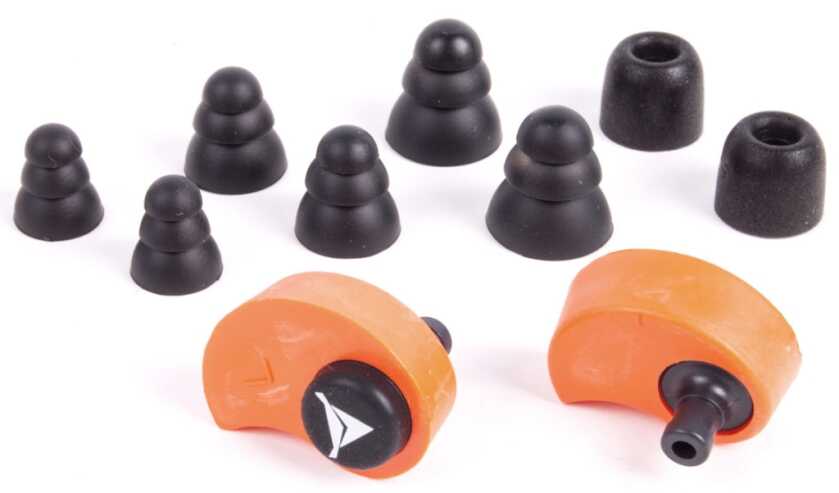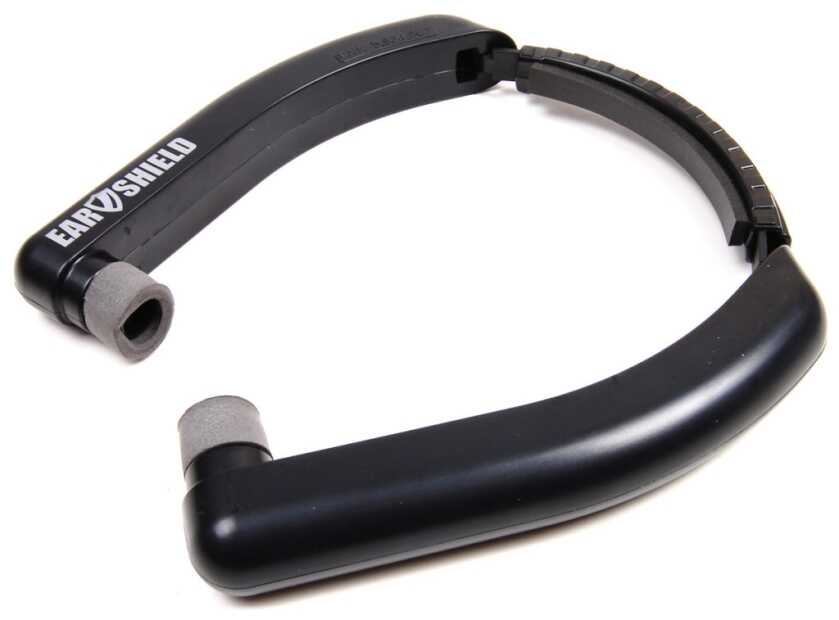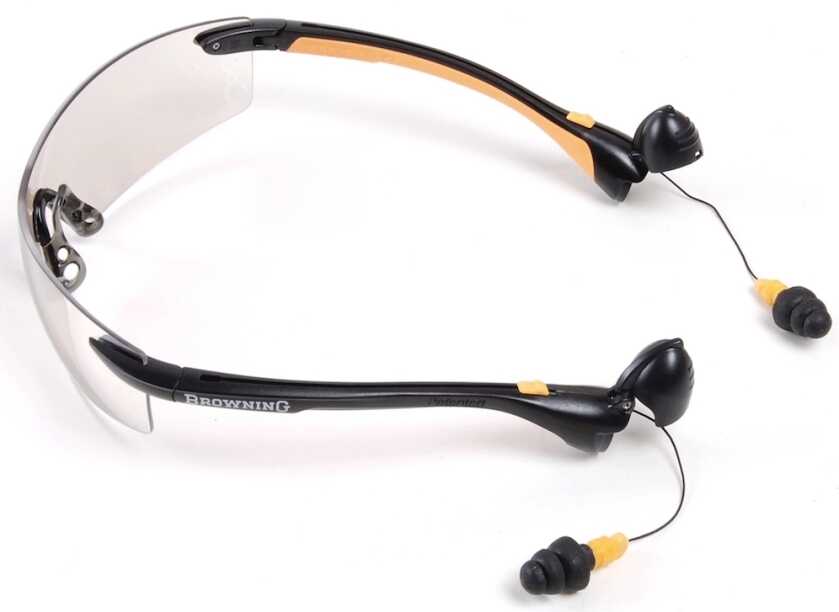While electronic hearing protection is becoming ubiquitous, it’s not for everybody (like me, for instance). While I love high-tech gear that both protects my hearing from gunfire and enhances my ability to hear all of the other sounds around me, I sometimes prefer to go low-tech and use hearing protection that does not require batteries. My main reason for doing so is mostly cost. Sometimes I just want something that is cheap but still effective. Not having to fuss with batteries is nice too. Every now and again, some manufacturer comes out with something cool that adds value to my shooting hobby. For this review, I have chosen some gear that is better than shoving two 9mm cartridges into your ears but not quite the investment of electronic plugs or muffs. With that, here are my top five nonelectronic hearing protectors.
Read Mark’s previous articles in this “Top Five” series:
- Top Five New Old Guns
- Top Five AR-15 Accessories
- And Top Five Autoloading Pocket Pistols
- Top Five Materials for 1911 Grips
- Top Five Keychain Tools, Part II
1. Decibullz Custom Molded Earplugs, $25.99

Not much gun gear comes with an instruction to insert the product into boiling water, but heating up the Decibullz like this allows them to be molded to the shape of your ear. And there’s your custom fit, complete with an NRR of 31. You can order these in black, blue, orange, pink and red. You can mold them more than once if you need to get a better fit in your ear. The moldable part fits into your ear; the tips that go in your ear canal can be either triple-flange or soft foam. When was the last time you ordered anything custom for less than thirty bucks?
For more information visit Decibullz.com.
2. EarShield, $19.99

Usually, electronic products both protect and enhance the user’s hearing. With EarShield, Otis Technology figured out a way to do both without electronics or batteries. Equipped with a Sound Reduction Chamber, EarShield not only manages either 31dB or 26dB levels of protection but also allows the user to hear speech while wearing them. That means you will have an easier time hearing range commands or your fellow shooters’ conversations at the range. Since EarShield plugs into your ear rather than surrounds it, there is no interference with any rifle or shotgun stocks. Adjustable and lightweight, they are also fairly cool in temperature and fold up neatly to take up less room in your range bag.
For more information visit OtisTec.com.
3. ProSounds/Sport Ear X-Pro Passive Ear Protection, $24.99

These plugs allow you to change the level of hearing protection with the push of a button. Press the plugs with foam tips into your ear canal, and you will enjoy 30dB NRR of sound reduction. The silicone tips provide only 24dB of protection. Press the button on each plug to open them up a bit and reduce the sound reduction to 19dB NRR. With less sound reduction, it is easier to hear conversations. When it’s time to fire the guns, another click on each will close them up again. Because the plugs are buried in your ear, you can wear additional muffs or a hat that covers your ears. If you have slightly diminished hearing in one ear, you can open up the plug in that ear and keep the other one closed, which may help balance out some of the incoming sounds.
For more information visit SportEar.com.
4. EarPro EP7 Sonic Defenders, $19.99

Similar to the X-Pro, the Sonic Defenders have foam plugs for your ear canals and a means of closing off and letting in sound. Instead of a switch like the X-Pro, the Sonic Defenders have filter that can be flipped open or closed. When closed, the Sonic Defenders have an NRR of 28dB. These earplugs are color-coded (red for right and white for left) and are connected by a lanyard, which is super handy. These can also be connected to some radio communication equipment.
For more information visit Surefire.com.
5. Browning SoundShield, $29.99

The Browning SoundShield combines the two essential pieces of safety gear into one unit, and it’s worth mentioning in this lineup because it is well-executed. For years, it’s been “eyes and ears,” meaning two separate pieces of equipment that you need to have ready at the range. The SoundShield is one piece of gear that covers these two key functions. The triple-flange plugs pop out of the end of the earpiece and stay attached with a cord. When you’re done, you press the top of the earpiece, and the plugs retract back into the earpiece. The earplugs have an NRR of 25 dB, and the lenses exceed ANSI Z87.1 impact standards.
For more information visit Browning.com.
Conclusion
Let’s round all these up. You get the most hearing protection (31 dB NRR) with the Decibullz. Plus, they’re custom-fitted to you. EarShield provides similar protection in a lightweight, easy-on/easy-off design. The X-Pro lets the user control the amount of noise with a push-button. The Sonic Defenders also let the user control the amount of noise with a filter cap; they are connected by a lanyard and also fit some radio communication equipment. Finally, SoundShield is one unit that protects both the hearing and the eyes. All of these products are available for purchase for $20 to $30. While they have no electronics or batteries, they have plenty of function.
Which would be of most interest to you and why?
***
About the Author: Mark Kakkuri is a nationally published freelance writer who covers guns and gear, 2nd Amendment issues and the outdoors. His writing and photography have appeared in many firearms-related publications, including the USCCA’s Concealed Carry Magazine. You can follow him on Twitter @markkakkuri.
Discover how you can join more than 200,000 responsibly armed Americans who already rely on the USCCA to protect their families, futures and freedoms: USCCA.com/gunsamerica.

Ditto…….my ears ring all the time, and I sure don’t need to make it worse, so I too use plugs and head gear.
Works great!
Years ago I started using a combo of foam earplugs plus earmuff hearing protectors.
NRR 33 dB (plugs currently about $.50/pair or less) + NRR 21+ dB (muffs found for less than $10.00).
I like the amount of suppression achieved for a fraction of the price of the higher priced options.
Unless its imperative that you need to hear a conversation while shooting, I suggest doubling up on the range. In other words use ear plugs in addition to a good quality head phones. Head phones should be at least 26 or greater NRR. If you are concerned that you wouldn’t be able to hear the range safety officer, it’s their job to holler at the top of their lungs or get a megaphone. After shooting for about 30 years, and having some tinnitus , I wish I could have followed my own advice when I started shooting. Remember, you can’t turn tinnitus off.
Ditto…….my ears ring all the time, and zI sure don’t need to make it worse, so I too use plugs and head gear.
Works great!
I tried the Otis Earshield against my better judgment, just as I suspected they didn’t work, I wanted them to work but they didn’t. I wonder how well and by whom these were tested by for this “report”? I hate to be negative but this looks more like an advertisement, that’s ok unless it’s something concerning your health, tinnitus is a real problem that deserves real information.
Howard Leight disposable foam earplugs have a 33 decibel Noise Reduction Rating, making them clearly superior to the expensive, inconvenient, space-wasting gimmicks featured in your report.
Earshield seemed novel but I was skeptical of the performance so I bought one to try. It worked really well so I now have several and they are my favorite hearing protection. Just like the article says they block the bad noise and let in the good, thus allowing you to hear conversation.
Recently bought a pair of Westone DefendEar Hunter Passive plugs…the whole package cost just $153, including the audiology fitting. They’re good for stalking because you can still hear ambient sounds and discussions from your partners, but they block the impulse of a gunshot. Not for range work with extended shots, but far cheaper than digital electronic plugs.